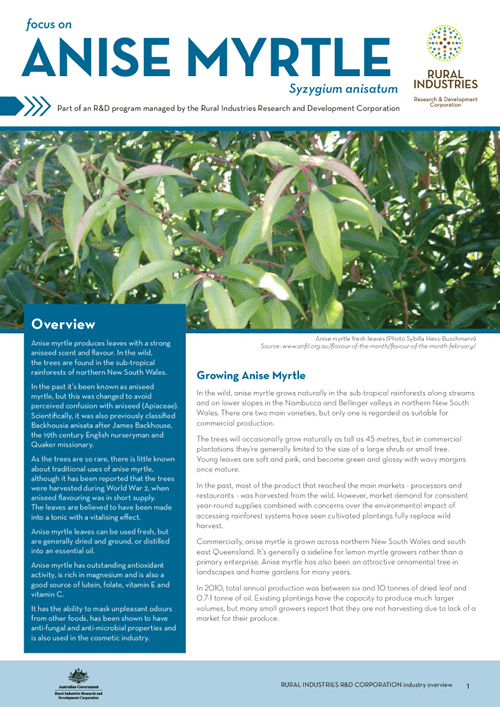Impact case study: Hazelnut investments give confidence to new growers
Australia’s peak hazelnut industry body says the number of growers in Australia is steadily increasing, as ongoing research and development efforts give potential new entrants...

Published: 12 Dec 2014
Author(s): RIRDC
ISBN: 978-1-74254-727-5
Download report PDF
DownloadThis fact sheet is part of a 13-part native food series.
Anise myrtle produces leaves with a strong aniseed scent and flavour. In the wild, the trees are found in the sub-tropical rainforests of northern New South Wales.
In the past it’s been known as aniseed myrtle, but this was changed to avoid perceived confusion with aniseed (Apiaceae). Scientifically, it was also previously classified Backhousia anisata after James Backhouse,
the 19th century English nurseryman and Quaker missionary.
As the trees are so rare, there is little known about traditional uses of anise myrtle, although it has been reported that the trees were harvested during World War 2, when aniseed flavouring was in short supply.
The leaves are believed to have been made into a tonic with a vitalising effect.